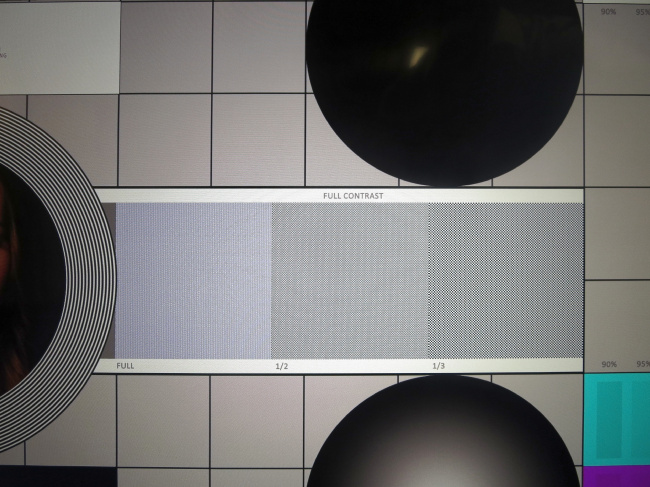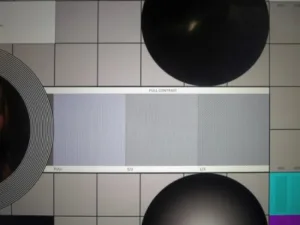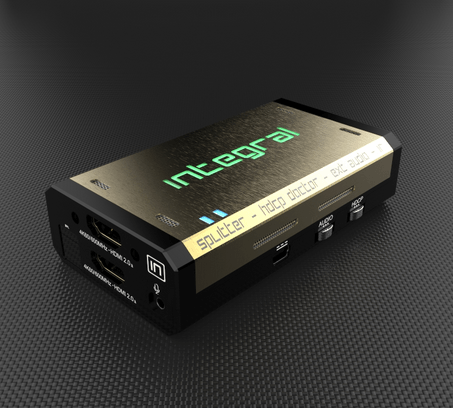 On a recent visit to A.V. Top, in Munich, Germany, I met with company principal, Florian Friedrich. He has been running the company for a number of years and has a lot of experience of testing TVs for magazines and websites as well as working as a consultant for TV brands and developing test software.
On a recent visit to A.V. Top, in Munich, Germany, I met with company principal, Florian Friedrich. He has been running the company for a number of years and has a lot of experience of testing TVs for magazines and websites as well as working as a consultant for TV brands and developing test software.
On my visit, I had a chance to look at some of the latest test patterns and content that Friedrich has developed for the purpose of understanding the new environment of UltraHD, HDR and wide colour gamuts. He had a great range of content that he has captured himself and more content that has been exclusively licensed from a Swiss photographer and processed from the uncompressed HDR raw files.
Friedrich, along with Joe Kane from the US, under the Quality TV brand, has previously developed Blu-ray test patterns that were for FullHD with standard dynamic range and this is being updated to support UltraHD Blu-ray with HDR. The correct support for HDR has meant that even simple patterns such as colour bars have had to be recreated from scratch and he told us that Quality TV will have an UltraHD Blu-ray disk out later this year that can be used to set up and test TVs.
Metadata is Critical
One of the points that became very clear as he started to dig into the HDR world was that the concept is totally dependent on the metadata that is included. We are in the process of moving from a very fixed world of SDR with Rec. 709, and with very precisely defined mastering conditions, based on the limitations of historic CRT technology, to a world where there will be many different ways of capturing, mastering (including colour grading) and displaying content. On the one hand, this will deliver some really compelling content. On the other hand, as the saying goes, with great power comes great responsibility. As well as offering the chance to make things really great, there is the chance to really mess things up!
Friedrich rapidly came to the conclusion that understanding and controlling the metadata is not just important, in his view it’s the most critical part of the move to HDR. When he started to work on this, he couldn’t experiment with different metadata settings, so he developed a tool to allow the editing of metadata. That tool is called AVTOPController and is available from his company. (http://hdr.avtop.com) He is working with HDFury, a company that has a real time hardware metadata converter that allows modified metadata to be added to an HDMI signal. AVTop has also developed SEIedit, a software package for editing metadata in HEVC and H.264 videostreams with HDR.
We then discussed the issue of resolution and the use of RGBW pixels on some TVs. Friedrich wrote an excellent Display Daily article (Pseudo UHD: Watch Out for Ultra HD TVs with Reduced Resolution!) on this topic which has engendered a very lively discussion – one that is also being played out within the display measurement community. Up to now, display architectures have been very largely based on RGB pixels, but with novel pixel techniques such as RGBW and those used by Samsung in its OLED displays, the issues of defining and measuring resolution have become more difficult.
On the one hand, there are the ‘pixel counters’, who say that for a display to have a particular resolution, there must be the complete number of full gamut pixels. On the other side are those from the human factors side that argue that it is the perceived resolution that is the critical point. Because human vision cannot resolve colour as precisely as brightness, there is no need to have the same resolution for each.
That argument will mean big decisions as the industry decides on the next generation of display measurement standards (and Friedrich is active in the ICDM which is developing the next generation of the IDMS standard). While I was at the lab, Friedrich sorted through his wide collection of TVs and found the LG43UF6909 which is an ‘UltraHD’ set that uses RGBW. As soon as he put a test pattern on the display, the problems were very, very obvious.
 The left hand square should also be neutral grey in this test. The RGBW implementation in this TV creates this problem.
The left hand square should also be neutral grey in this test. The RGBW implementation in this TV creates this problem.
Another interesting point was the question of resolution of UltraHD and the appropriate viewing distance. I had a look at a single pixel on/off pattern on a Samsung 65″ UltraHD LCD set. The theory is that the resolution limit of UltraHD should be around 1.5 times the picture height. However, I could clearly. see the horizontal and vertical lines at over 3 metres, so that is about 4 times the picture height. I am lucky in having sharp distance vision, but I’m also in the older cohort, so I would have expected a younger version of me to have been able to see the details at an even greater distance!
Codecs Also Matter
Finally, Friedrich has been doing a lot of work on the HEVC codec in UltraHD and has found that the high bit rate signals of the Blu-ray UltraHD players (which can support over 100 Mbits) is really needed. He has some (admittedly very difficult) video of fast moving mountain streams encoded at 75Mbps originally, and at even 30 Mbps, compression artefacts and colour problems become visible, and quite disturbing at 15 Mbs. This keeps him completely convinced that Blu-Ray UltraHD, with its high bit rate capability will remain the ‘gold standard’ for UltraHD into the future. (and we didn’t even talk about the kind of high frame rate content that Hollywood is experimenting with!). – (BR)


